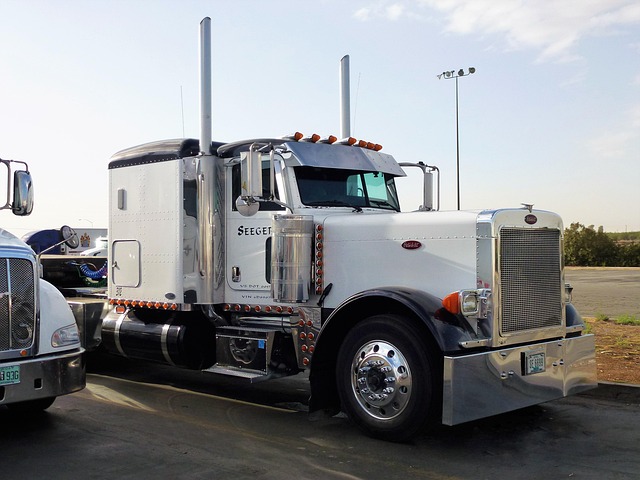Looking to register your car in California? This comprehensive guide walks you through every step of the process. From understanding the requirements to gathering essential documents, and visiting the DMV for VIN verification, we’ve got you covered. Learn about registration fees, keeping your vehicle up-to-date, and more. Streamline the experience with this detailed reference on California’s vehicle registration process.
- Understanding the California Vehicle Registration Process
- Gathering Necessary Documents for Registration
- Visiting the DMV for VIN Verification and Registration
- Paying Registration Fees and Taxes
- Keeping Your Vehicle Registered and Up-to-Date
Understanding the California Vehicle Registration Process

In California, registering your car involves a straightforward process that begins with gathering necessary documents and ensuring your vehicle meets all legal requirements. The first step is to obtain a Vehicle Identification Number (VIN) verification from the Department of Motor Vehicles (DMV). This crucial process includes a detailed inspection of your car’s VIN, which is unique to each vehicle and provides vital information about its history and specifications. You can opt for a mobile vin inspection or verification service to make this step even more convenient, as these professionals can come to you and handle the paperwork and checks promptly.
Once your VIN has been verified, you’ll need to visit a DMV field office with your vehicle and essential documents like proof of ownership, insurance, and identification. The DMV will assess any fees associated with registration, title transfer (if applicable), and emission tests. After all requirements are met, they will issue a registration certificate, and your car will officially be registered in the state of California. This process ensures that every vehicle on California’s roads is safe, legal, and tracked through the unique VIN, which aids in preventing fraud and theft.
Gathering Necessary Documents for Registration

Before heading to the California Department of Motor Vehicles (DMV), ensure you gather all the essential documents for a smooth registration process. This includes your vehicle’s registration certificate or release of liability from the previous owner, a valid driver’s license, proof of insurance, and your vehicle identification number (VIN). The VIN is a unique code that can be found on the vehicle’s identification plate or in its engine compartment—it’s crucial for the dmv vin verification process.
Additionally, consider having a mobile vin verification service perform a quick vin inspection to ensure your vehicle’s history is clean and there are no outstanding issues. Many reputable mobile vin verifiers offer this service, allowing you to complete this step conveniently before visiting the DMV.
Visiting the DMV for VIN Verification and Registration

Visiting the DMV for VIN Verification and Registration is a crucial step in the car registration process in California. Once you’ve gathered all the necessary documents, including your vehicle’s title and proof of insurance, head to your local Department of Motor Vehicles (DMV) office. There, you’ll need to undergo a Vehicle Identification Number (VIN) verification process, which involves an inspection of your car to ensure it matches the information on record. This step is essential for completing your registration and legally operating your vehicle within the state.
During the VIN inspection, a DMV officer will cross-reference your car’s VIN with their records to verify that the details match. This includes checking the make, model, year, and other specifications. If everything aligns, you’ll be cleared for registration. Otherwise, the DMV may require additional documentation or corrections before finalizing your registration. Consider using a mobile vin verifier if you prefer a more convenient and often faster alternative to visiting the DMV in person for this verification process.
Paying Registration Fees and Taxes

When registering your car in California, you’ll need to pay several fees and taxes. The California Department of Motor Vehicles (DMV) charges a base registration fee, which includes costs for vehicle licensing and road usage. Additionally, you might be subject to other fees based on your vehicle’s type, age, and emissions standards. One important step before registration is the DMV vin verification, ensuring that your car’s unique Vehicle Identification Number (VIN) is legitimate and matches the make, model, and year listed.
You can facilitate this process with a mobile vin inspection service, which allows for convenience and often provides faster results than traditional methods. This involves using advanced technology to check the VIN against databases, confirming the vehicle’s history and ensuring it meets all legal requirements. As part of the registration, you’ll also be responsible for paying sales tax, which is calculated based on the vehicle’s purchase price. Ensure you have all necessary documents, including proof of ownership and insurance, when visiting a DMV office or completing the registration process online.
Keeping Your Vehicle Registered and Up-to-Date

Maintaining a current vehicle registration is crucial for safe and legal driving in California. To keep your car registered and up-to-date, it’s essential to stay on top of renewal deadlines. The California Department of Motor Vehicles (DMV) provides reminders via mail, but you can also manage your registration online for convenience. Regularly checking your vehicle’s status ensures you’re compliant with state laws.
A key part of this process involves the DMV’s Vehicle Identification Number (VIN) verification. This is typically done during registration renewals or when there are changes to your vehicle, such as a new owner or significant modifications. For added convenience, some services offer mobile VIN inspections and verifications, allowing you to complete these necessary steps from the comfort of your home or on-the-go.
Registering a car in California is a straightforward process, but it requires careful preparation. By understanding the steps involved, gathering all necessary documents, and visiting your local DMV for VIN verification, you can ensure a smooth registration experience. Remember to stay up-to-date with renewal requirements and fees to keep your vehicle legally registered. Following these steps will have you cruising on California’s roads in no time!
